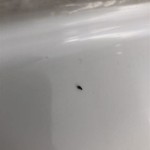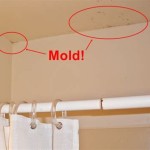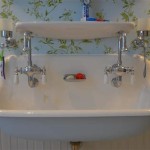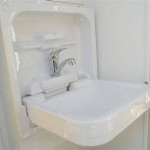Where Is the Smell in My Bathroom Coming From Sink Drainers?
A foul odor emanating from your bathroom sink drain is a common household problem that can be both unpleasant and perplexing. The source of the smell can be elusive, but understanding the potential culprits can help you pinpoint the issue and address it effectively. This article will explore common causes of bathroom sink drain smells, offering insights into both the underlying reasons and practical solutions.
1. Bacteria and Decaying Organic Matter
The most frequent culprit behind a smelly bathroom sink drain is the buildup of bacteria and decaying organic matter within the drainpipe. When food particles, hair, soap residue, and other organic materials accumulate in the drain, they create a breeding ground for bacteria. These bacteria decompose the organic matter, producing unpleasant odors that travel into the bathroom.
This issue is particularly prevalent in drains that lack proper ventilation or are infrequently cleaned. Bacteria thrive in moist, dark environments, and a poorly ventilated drainage system provides the perfect setting for their proliferation. Regular cleaning of sink drains, using a combination of baking soda and vinegar or commercial drain cleaners, can help control bacteria growth and minimize odor production.
2. P-Traps and Their Importance
A P-trap is a U-shaped pipe located beneath your bathroom sink. Its primary function is to prevent sewer gases from entering your home. The P-trap acts as a barrier, holding a small amount of water that seals the opening to the sewer line. If this water evaporates or is drained away, sewer gases can rise through the drainpipe and into your bathroom.
A common cause of P-trap water evaporation is infrequent sink usage. When the sink remains unused for extended periods, the water in the P-trap can dry out, allowing sewer gases to escape. To prevent this, ensure that you run water through the sink regularly, maintaining a water seal in the P-trap. If the P-trap appears to be damaged or leaking, it should be repaired or replaced to ensure proper functionality.
3. Sewer Line Issues
While less common than bacterial buildup or P-trap problems, issues with the sewer line itself can also contribute to bathroom sink drain odors. A blockage within the sewer line can create a buildup of pressure, pushing sewer gases back up through the drainpipe. This can result in a strong, unpleasant smell that originates from the sink drain.
If you suspect a sewer line issue, it is advisable to consult with a licensed plumber. They can inspect the sewer line for blockages or other problems and recommend appropriate solutions. Root intrusion, pipe damage, and improper slope can all contribute to sewer line issues. Addressing these problems promptly is essential to prevent further complications and ensure proper drainage functionality.
4. Venting Problems
Proper ventilation is crucial for maintaining a healthy and odor-free bathroom environment. The vent stack, a vertical pipe connected to your sewer line, allows air to flow into the drainage system, preventing pressure buildup and facilitating proper drainage. If the vent stack is blocked or damaged, it can disrupt the airflow, creating negative pressure within the sewer line and potentially pushing sewer gases back up into the bathroom.
Signs of a venting problem include slow drainage, gurgling noises coming from the drain, and foul odors. If you suspect a venting issue, a licensed plumber can diagnose the problem and recommend necessary repairs or replacements. Ensuring proper ventilation is essential for maintaining a comfortable and hygienic bathroom environment.
5. Drain Traps and Their Role
Drain traps are devices that collect and retain water within the drain system, preventing sewer gases from entering your home. If the drain trap becomes clogged with debris, it can prevent water from flowing freely, disrupting the water seal and allowing sewer gases to escape. Regular maintenance of drain traps is crucial for preventing blockages and ensuring proper drainage.
To clean a drain trap, first remove the drain stopper and carefully remove the trap. Then, use a plunger to dislodge any debris and clean the trap with hot water and a mild detergent. Reinstall the trap and run water through the sink to ensure proper drainage. Cleaning drain traps on a regular basis can help prevent blockages and reduce the risk of unpleasant odors.

What Causes Bathroom Drains To Smell

How To Clean A Stinky Sink Drain Home Repair Tutor

Sewer Smell In Bathroom Solved Bob Vila
My Bathroom Smells Bad But Only When Its Hot Outside It Also Will Slightly Go Away I Run The Sink And Toilet Bathtub Any Thoughts On What Is

7 Causes Of A Sewer Smell In The Bathroom Hays

How To Clean Smelly Drains Living By Homeserve
Why Is There A Sewage Smell In Your Bathroom Howstuffworks

Do Your Drains Smell Like Rotten Eggs Huft Home Services
I Have A Guest Bathroom That Gets Really Little Use Am Starting To Smell Sewer Odor Coming From The Sink And Shower What Is Causing This How Do

Unused Bathroom Smells Like A Sewer Causes And Solutions
Related Posts







